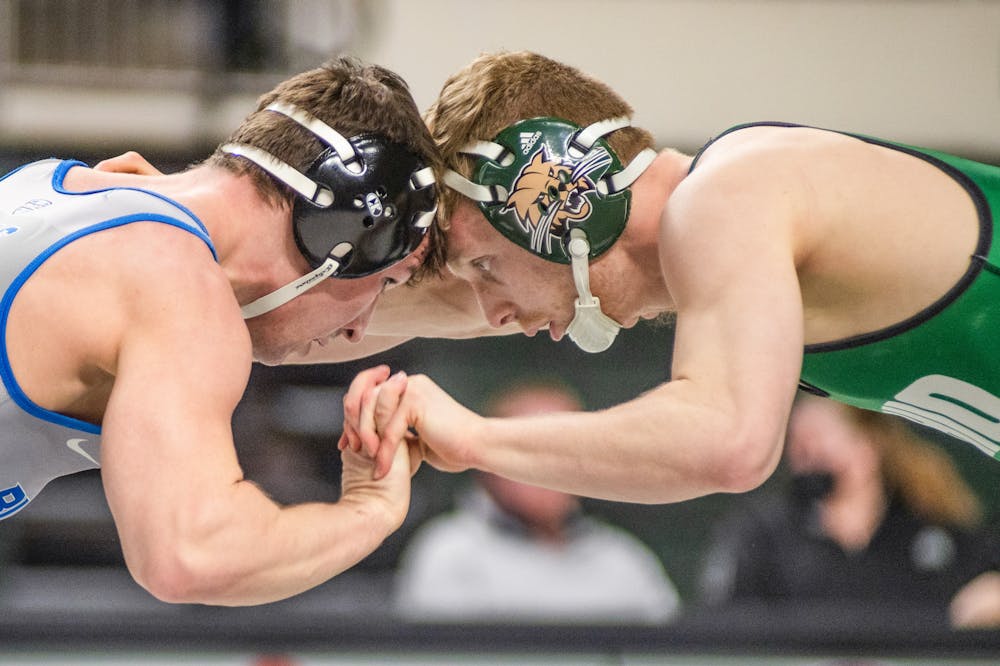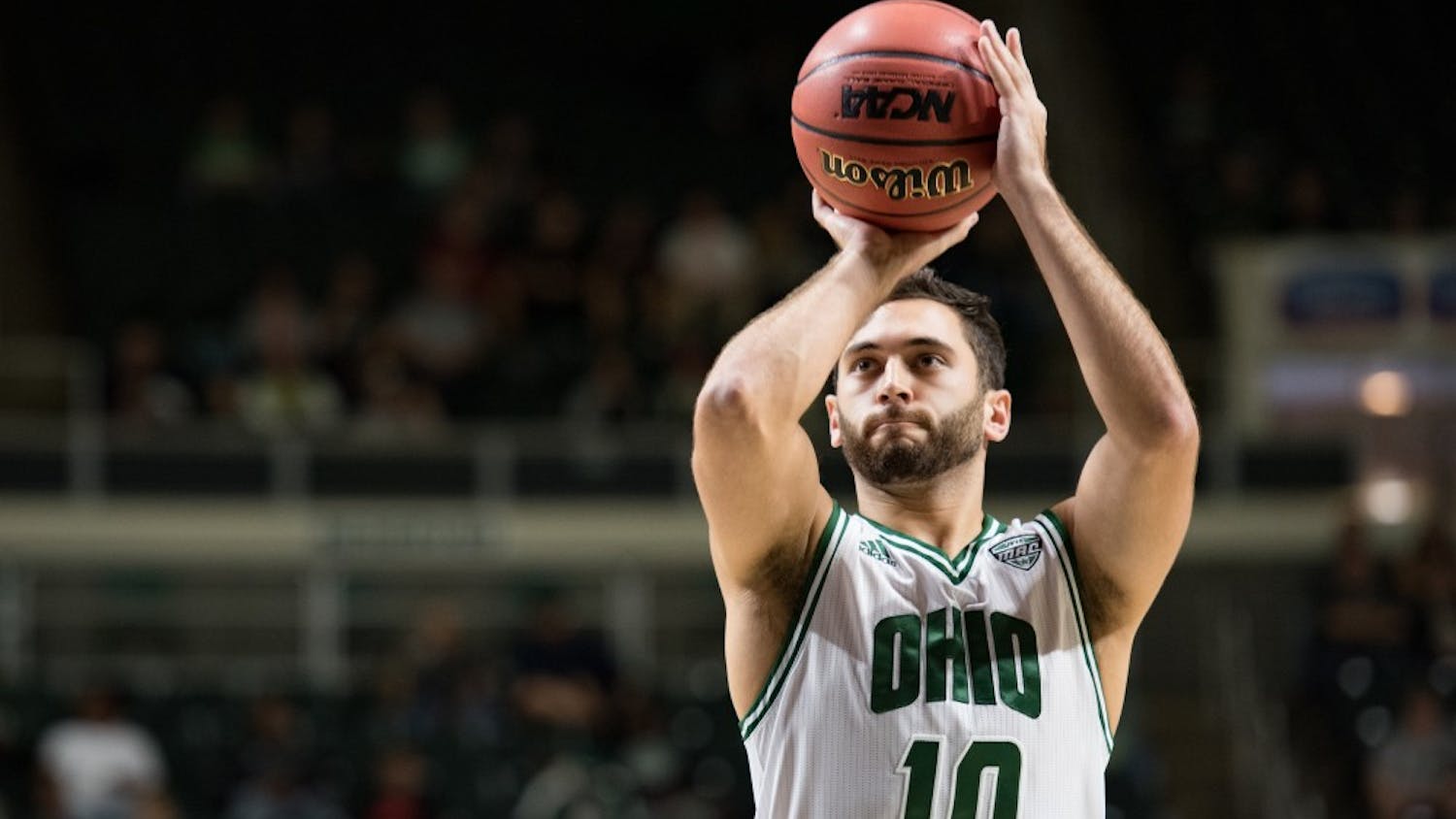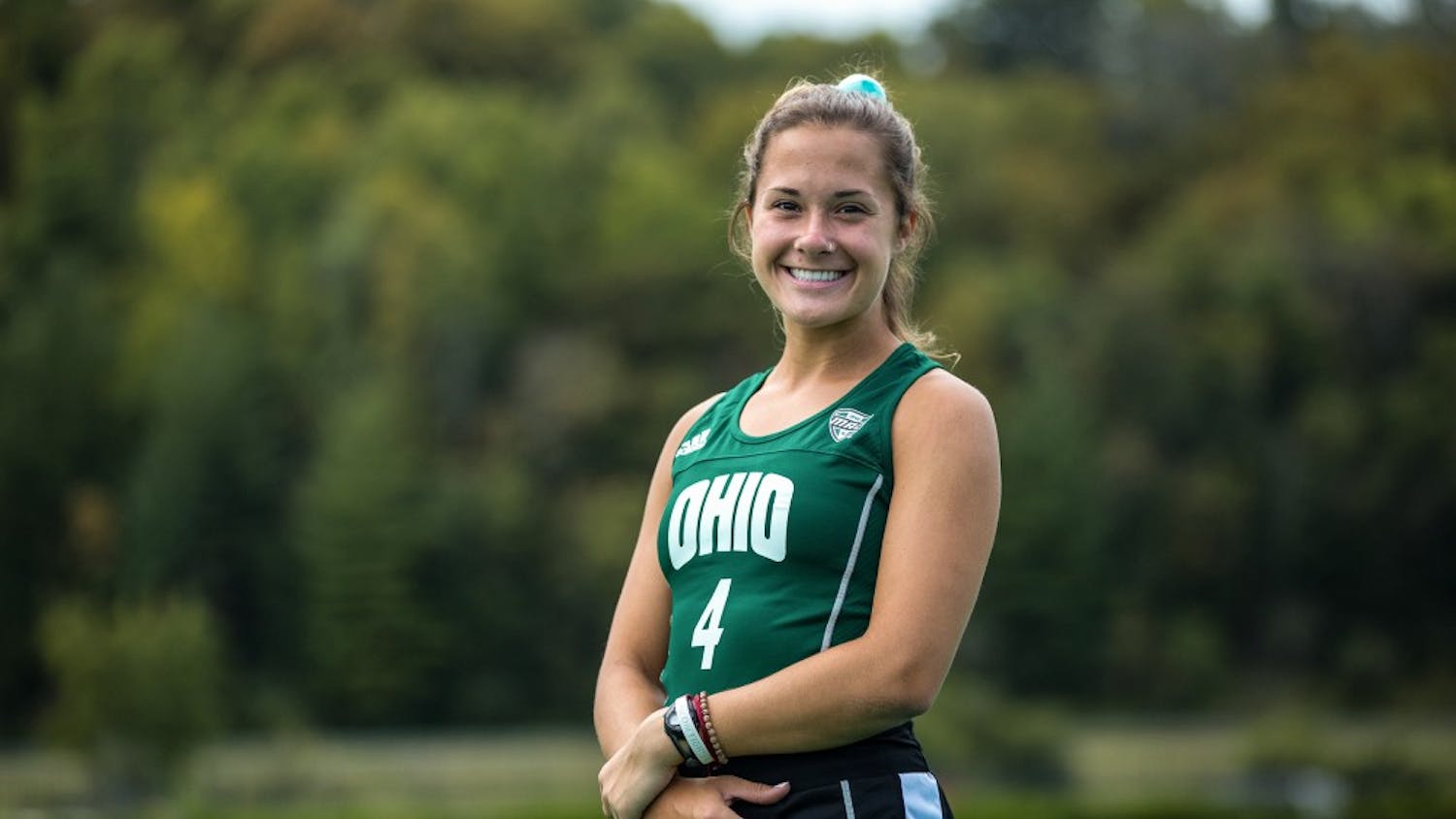Wrestling is not for the weak.
The stress of doing full body combat with another human-being makes wrestling one of the most difficult sports in collegiate athletics. Being constricted to a 32-foot diameter area also makes it difficult. However, arguably the most challenging aspect of being a wrestler is the dieting practices and weight management.
In his 25th season as the Ohio wrestling coach, Joel Greenlee knows a thing or two about how to properly prepare an athlete’s body for competition.
“I think that it really comes down to an individual basis,” Greenlee said. “Obviously, you can do the (NCAA) thing where you cannot go less than 5% body fat and not be able to lose more than 1.5% body fat in a week. I think that once you do that, you can get a good gauge at what weight you can and cannot be at during the season.”
From the coaching staff’s perspective, it depends on how much effort and care the athlete gives to their body. Greenlee leaves it to the athletes to figure out what works best for them, although he is happy to help if there are any questions over the correct practices. He uses his experience as a major factor in this decision.
“I think that the resources in college athletics are way better than they’ve ever been,” Greenlee said. “As far as nutritionists, dieticians are concerned, (you) have to take advantage of it and ask me those questions.”
On the other side of the spectrum, the athletes have mixed feelings on dieting programs or lack thereof. Graduate student Alec Hagan has been at Ohio for six seasons, which has been enough time for him to figure out his stance on how dieting programs benefit and hamper wrestlers. Hagan, like Greenlee, understands that staying proactive in one’s diet is a key to success.
“I think that the coaches do a lot to help us out. They have a lot of snacks in the locker room … In the end, it is pretty simple for a lot of us,” Hagan said. “You just need to work out more than what you put in. I usually just try to cut it, try not to drink a lot of calories. I also try to space out six little meals throughout the day … I space them out to get my metabolism going and be able to burn those calories throughout the day.”
In Hagan’s case, he experiments with the different practices. Not only is he a sixth-year athlete, but he has a twin brother, Kyran, who also wrestles for the Bobcats. The ability to have a bit of trial and error regarding the weight and diet management programs are key for Hagan.
“I think that coming in as a freshman, I thought that I could cut weight like an idiot,” Hagan said. “Like (Coach) Greenlee said, a lot of guys think it is cute and funny to be a lot over and have to cut. I remember in my freshman year, we drove to Iowa State. I think we went to McDonald’s the night before to grab something easy. I went out there in front of 5000 people and got pinned. I went on my phone to see it uploaded to FloWrestling and it hit me that this is not funny. I decided that I needed to keep my diet under control and fix this issue.”
Although that lifestyle might work for some wrestlers, others need more guidance from the coaching staff. One of the main tenets of Greenlee’s weight management program is that being lean is far better than making a certain weight.
“I think you need to be lean just because the work ethic and workouts are different,” Greenlee said. “You have to fuel your body the right way. I think everybody is more physically mature in college, so it is less about pure abilities and more about other things. It is hard for you to be successful at a high body fat.”
The philosophy that Greenlee and the entire Ohio coaching staff subscribe to is worthless if the wrestlers refuse to buy into it.
“We are not eating with them,” Greenlee said. “We are not in the dorms everyday, you have to figure that stuff out on your own and as it goes.”
The elder statesmen in the locker room makes the “buy in” easier for younger wrestlers. Hagan, being one of the most experienced wrestlers, knows that the responsibility falls upon him to lead the way.
“Setting an example in the locker room if (someone) is struggling with their weight. I can tell him things that worked for me and try to get him away from just cutting corners like taking the easy way out by sweating off weight and losing water weight quickly instead,” Hagan said. “Getting down to a body fat level where you are healthy and can wrestle well instead of trying to cut a bunch of water weight late … I also tell them that eating crappy foods will make you feel crappy in the end.”
Greenlee and Hagan have both watched countless wrestlers step onto the mats with varied levels of success. One thing that has driven success for wrestlers is their ability to maintain their physical health. Ohio has a long season ahead of it, but it will survive under Greenlee’s watchful eye and with proper nutrition.






